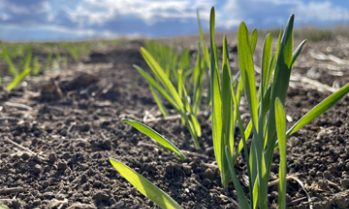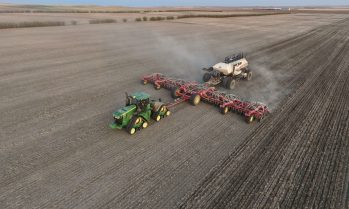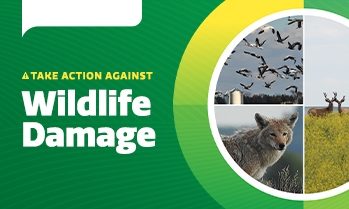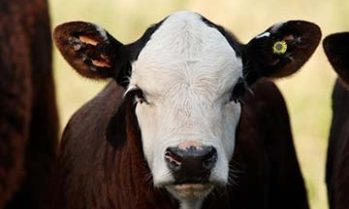FAQs
Get straight-forward, informed answers to your most important insurance questions.
General Questions
-
Glad you asked...
You can access your Crop Insurance, AgriStability and Livestock Price Insurance accounts online.
AgConnect
AgConnect is SCIC’s web-based application for reviewing and submitting AgriStability information, available online 24/7. Using AgConnect allows you to: access your AgriStability information in one place, eliminate paperwork and tracking multiple files, easily file your forms online, view important historical information about your account and send supporting documents electronically.
All customers have been assigned an activation code for accessing AgConnect. If you need assistance with this, visit your nearest SCIC customer service office or phone 1.866.270.8450. Our great team can help you activate your AgConnect account. To log into AgConnect, click here.
CropConnect
CropConnect allows you the flexibility to enter insurance selections, estimate costs with the insurance calculator, add or delete crops, select options and select levels of coverage. CropConnect provides complete personalized information and is conveniently accessible from any device. CropConnect also allows you to file your Seeded Acreage Reports, production and stored grain declarations or file a claim.
All customers have been assigned an activation code for accessing CropConnect. If you need assistance with this, visit your nearest SCIC customer service office or phone 1.888.935.0000. Our great team can help you activate your CropConnect account. To log into CropConnect, click here.
Livestock Price Insurance (LPI)
Create a web account with LPI today to handle your insurance transactions online. You will need a valid email address and identification number to create a web account. Click here to login or create your web account.
Privacy and Security
Customers have the ability to update and control their personal settings. Passwords, email addresses and security questions can be updated and changed at your convenience. Your information is kept secure in accordance with the Government of Saskatchewan’s Freedom of Information and Protection of Privacy Act.
-
Glad you asked...
It is never too early to start planning for the season ahead. We are here to help you understand your coverage and the various insurance options available to best suit the needs of your farm. Contact your local SCIC office or call us toll-free at 1-888-935-0000 to learn more.
Deadlines to enrol in SCIC programs or make changes to your coverage:
- March 31 - the deadline to apply, reinstate, cancel or make changes to Crop Insurance contracts. This is also the deadline to select insured crops and coverage levels.
- April 30 - the deadline to enrol in AgriStability for the current program year. To join, click here or call us at 1-866-270-8450 and request a New Participant Package before April 30.
- February through June - Livestock Price Insurance Program (LPI) Calf price insurance is available to purchase each year from February to June with settlement periods occurring September to February.
- Livestock Price Insurance is also available for Fed and Feeder cattle year-round. Please visit lpi.ca for more information.
-
Glad you asked...
At SCIC, we have a wide variety of insurance options to meet your needs. Our knowledgeable staff are available across the province to help discuss which programs and options can work best to manage your farm’s risk. Contact your local SCIC office or call us toll-free at 1-888-935-0000 to customize your farm insurance.
Each farming operation is different and there are many options to manage your risk. SCIC offers various crop selections and coverage options within the Crop Insurance Program, as well as additional risk protection through the AgriStability Program, the Livestock Price Insurance Program and the Wildlife Damage Compensation and Prevention Program. All SCIC programs and services can work together to provide comprehensive risk management for your farm.
-
Glad you asked...
SCIC is pleased to offer a wide variety of insurance options for livestock producers – including Crop Insurance (forage coverage and weather-based forage programs), AgriStability, and the Livestock Price Insurance Program. Plus, the Wildlife Program is also available to all Saskatchewan producers to provide compensation and prevention assistance for wildlife damage to your crop in the field, stacked hay or greenfeed in the yard, or predator attacks on your livestock.
Crop Insurance
-
Glad you asked...
Crop Insurance covers both production and quality. Your coverage is based on what you have grown over the long term and the coverage option you selected.
Please contact your local SCIC office or call us at 1-888-935-0000 to discuss the details of your farm's coverage.
-
Glad you asked...
Base price for most crops is based on Agriculture and Agri-Food Canada’s January price forecast for the upcoming year. Pedigreed, forage and organic crops have a separate price structure to reflect the value of these crops.
Producers have the option of selecting from a variety of price options, including: Base and Low Price Options, In-Season Price Option and Contract Price Option.
-
Glad you asked...
March 31 is the deadline to apply, reinstate, cancel or make changes to a Crop Insurance contract. This is also the deadline to select insured crops and coverage levels.
Don't wait until the deadline, contact your local SCIC office today to review all Crop Insurance options and select coverage best fit for your operation.
-
Glad you asked...
If you have a current Crop Insurance contact, you can access our online application CropConnect. Through CropConnect, you can enter insurance selections, add or delete crops, select options and choose coverage levels.
Access the online portal at: CropConnect or call us toll-free: 1-888-935-0000 for more details.
-
Glad you asked...
Starting in 2023, an Individual Premium is calculated for each crop a producer insures through the Crop Insurance Program.
Crop Insurance customers will see an Individual Premium for each crop based on personal claim history compared to the claim history of other producers of the same crop, within the same area (risk zone).
-
Glad you asked...
Individual Premium is individually adjusted for each crop based on your risk directly compared to the loss history of the risk zone. Your risk is measured by comparing your total claims (since 1998) to your total premiums over the same period, for each specific crop.
This individual risk compared to loss history of the risk zone determines an Individual Premium adjustment up or down from the risk zone base premium.
To learn more about your specific Individual Premium, please contact your local SCIC office or request a call back.
-
Glad you asked...
Saskatchewan is divided into 23 grain risk zones and 17 forage risk zones. The areas in each risk zone have similar crop production risks, which are used to determine the premiums a producer pays and the coverage they receive on their crops. Risk zones are determined by grouping areas with similar soils, climate and growing conditions.
The risk zones for the respective crop (e.g., forage risk zones, soybean risk zones, etc.) are used for determining the Individual Premium on that crop.
-
Glad you asked...
SCIC has always used risk zones as a benchmark within the Crop Insurance Program. Comparing each farm to other farms in the area provides a more wholistic perspective of the seeding conditions, growing season and production. Claims and similar loss experience within the risk zone help offset large fluctuations in premium rates for each farm.
When the entire risk zone has a bad year (e.g., 2021 drought, frost, early snow fall), the Individual Premium calculation helps minimize the impact on premium. Since a producer's individual claim history is compared to the area risk zone history, widespread claims among the area will lessen the likelihood of the producer seeing a premium increase.
As there is a one-year lag when calculating Crop Insurance premium rates, the 2021 production is now used for 2023 premiums. While there was a large number of claims in 2021, the effects were widespread, and this is how Individual Premium’s comparison to the area risk zone helps offset the impact of those claims.
-
Glad you asked...
For producers participating in Crop Insurance, the Seeded Acreage Report is necessary to calculate your level of insurance and process your claims. You must submit a Seeded Acreage Report declaring your seeded acres no later than June 25.
You do not have any Crop Insurance coverage until you report your acres on your Seeded Acreage Report. If you suffer a crop loss and have not reported your acres by June 25, your claim may be denied.
Seeded Acreage Report forms will be mailed to you in May. You can phone, fax, or mail your Seeded Acreage Report to any SCIC customer service office or you can use CropConnect to complete personalized reports online. If you fail to submit or are late, you may be assessed a penalty of $60. If necessary, an adjuster will visit your farm to gather the required additional information at an additional charge.
-
Glad you asked...
The Unseeded Acreage (USA) feature is included with multi-peril insurance coverage. All Crop Insurance customers have this protection for land too wet to seed due to excessive spring moisture.
If you are experiencing wet acres this spring, you can file a Unseeded Acreage claim by June 25. Submit the claim through your CropConnect account or by speaking to your SCIC office.
For more information about your Crop Insurance coverage or to file a Unseeded Acreage claim, contact your local SCIC office or call us at 1-888-935-0000.
-
Glad you asked...
Crops that fail to adequately establish or suffer significant damage due to insurable causes before June 20 are eligible for an establishment benefit. Click here to learn more.
-
Glad you asked...
Fall crops seeded by September 30, and insured for yield-loss by March 31 of the following year, will be covered for spring-related establishment losses that are not winterkill related.
-
Glad you asked...
When selecting your Crop Insurance coverage, you have a determined production guarantee and a designated grade for the crop you are insuring.
To determine the amount of compensation for quality loss, SCIC uses a formula that makes up the difference between the value of the harvested production and the value of the designated grade for the insured crop. The difference is known as a quality factor and this factor is applied to the harvested production when calculating the final Crop Insurance payment.
-
Glad you asked...
Absolutely! SCIC encourages producers to consider participating in both Crop Insurance and AgriStability Programs as part of a comprehensive risk management plan for their farming operation.
With Crop Insurance, you have coverage for your crops from the start of seeding season until harvest is complete. Through AgriStability, you have even further coverage for other uncontrollable events throughout the year (such as rising input costs, falling commodity prices or unforeseen additional expenses. Since AgriStability accounts for the whole farm, the Program can provide benefit payments even if you also receive a Crop Insurance payment.
Click here to to find the right coverage for your operation.
-
Glad you asked...
Crop Insurance customers who selected the Forage Rainfall Insurance Program (FRIP) have coverage against dry conditions and fire. FRIP customers can manage and graze their grass as needed.
For weather derivative programs, claims do not have to be filed; they are automatically calculated based on weather station data.
-
Glad you asked...
Clubroot is an important soil-borne disease that has the potential to impact yields on cruciferous crops (canola, mustard, etc.). Crop rotation is key to minimizing the impact and incidence of this disease. SCIC is working with the Ministry of Agriculture to inform Saskatchewan producers about the importance of rotation to manage clubroot. In some cases, if producers continue growing canola on the same land location and suffer a loss, their coverage may be reduced or denied.
-
Glad you asked...
Yield trending recognizes agronomic and production advancements and increasing a producer’s historical yields. Agronomic advancements may include improved farm management practices, technology, equipment and new crop varieties.
AgriStability
-
Glad you asked...
The deadline to enrol in AgriStability each year is April 30. Producers enrolled in the Program must pay their program fees by December 31 to be eligible to receive program benefits. There is a penalty for fees paid after the April 30 deadline (or 30 days after their enrolment fee/notice), whichever is later.
To participate in AgriStability, please contact us and request a new participant package.
-
Glad you asked...
This can vary from company to company, but in most cases, it is the difference between the amount the producer committed to deliver, and the actual amount they must meet for the commitments of the forward contract.
To learn more, click here.
-
Glad you asked...
In the event you cannot meet the obligations of the contract, you may decide to purchase inventory to fulfill the contract. The income and expense related to purchasing inventory to meet the shortfall of the contract is allowable, if the operation has the resources/capacity to produce the commodity at the amounts which are contracted.
To learn more, click here.
-
Glad you asked...
Yes, however, it is the shortfall between the actual production amount the producer has the ability to deliver on and the volume committed to in the forward contract which AgriStability considers allowable. In situations where producers did not produce enough grain to fulfill their contracts, they can enter the expense incurred to buy out the shortfall of their contracts under code 9836 Commissions and Levies. The shortfall represents only the quantity of the contract they were unable to fill, and not the cost to buy out the entire contract to obtain a better price.
-
Glad you asked...
An interim benefit payment is an advance on your final AgriStability benefit payment. You can apply for an interim benefit if you need access to program funds before completing your program year.
Saskatchewan producers can apply for an interim benefit, by March 31, to receive 50 per cent of their estimated final benefit before completing their program year. The interim benefit is calculated based on the estimated margin decline or loss for the year when compared to the reference margin (historical average).
Please call the AgriStability Call Centre to see if you may be eligible to receive an interim benefit.
-
Glad you asked...
Absolutely! SCIC encourages producers to consider participating in both Crop Insurance and AgriStability Programs as part of a comprehensive risk management plan for their farming operation.
With Crop Insurance, you have coverage for your crops from the start of seeding season until harvest is complete. Through AgriStability, you have even further coverage for other uncontrollable events throughout the year, such as, rising input costs, falling commodity prices or unforeseen additional expenses. Since AgriStability accounts for the whole farm, the Program can provide benefit payments even if you also receive a Crop Insurance payment.
Livestock Price Insurance
-
Glad you asked...
SCIC is pleased to offer a wide variety of insurance options for livestock producers – including Crop Insurance (forage coverage and weather-based forage programs), AgriStability, and the Livestock Price Insurance Program. Plus, the Wildlife Damage Program is also available to all Saskatchewan producers to provide compensation for wildlife damage to your crop in the field, stacked hay or greenfeed in the yard, or predator attacks on your livestock.
-
Glad you asked...
Livestock Price Insurance (LPI) is a Western Canadian program involving the federal government, Alberta, British Columbia, Manitoba and Saskatchewan. SCIC administers LPI for Saskatchewan producers.
For protection against unexpected price drops and uncontrollable factors influencing the market, producers can purchase a LPI policy that guarantees a forward market price for your calves, feeders or fed cattle. Even if you are in a claim position, you can still choose to sell or keep your livestock.
-
Glad you asked...
Livestock Price Insurance (LPI) can help you protect your operation against unexpected price declines. Select from a variety of price insurance coverage options, every Tuesday, Wednesday and Thursday, to find the best fit for your livestock operation. For Saskatchewan producers, there are two regional premium tables to choose from with a wide range of coverage indexes.
Calf policies are available to purchase annually from February until mid-June, with coverage based on an average 600-pound steer calf. Feeder policies are available year-round for all weaned calves not intended to be finished, with coverage based on an 850-pound steer. Fed policies are also available year-round for cattle on full feed to be finished.
-
Glad you asked...
Livestock Price Insurance can help protect your operation against market volatility and unexpected price declines. Many factors impact price fluctuations. Currently, there are few risk management programs available to Canadian livestock producers. The Livestock Price Insurance program is flexible and market driven, taking into account three areas of risk specific to Canadian cattle producers: price, currency and basis.
-
Glad you asked...
Take advantage of added convenience and flexibility through Payment on Account and over-the-phone purchasing options. Enrolment is free.
Please visit any SCIC office or call 1-888-935-0000 to purchase LPI policies and make claims.
-
Glad you asked...
Producers who purchased a Livestock Price Insurance policy enter their claim window in the final four weeks of the policy. Settlement values reflect weekly market conditions and are determined using data collected from various auction markets across western Canada. During the first three weeks of the claim window, producers are in a claim position when the settlement index is lower than the insured coverage. The policy holder must manually manage their claim in those first three weeks. If the settlement index for the fourth and final week is lower than the producer’s insured coverage, a claim will automatically calculate using any remaining insured weight on the policy. Settlement indices are published on Mondays.
To sign up to receive the LPI premiums and settlements indices by email, click here.
-
Glad you asked...
The Livestock Price Insurance premium tables provide a snapshot into the future. Becoming familiar with the premium tables and how they fluctuate day-to-day will assist when making purchasing decisions. When you purchase coverage to establish a floor price, you can maximize market potential. In the final four weeks of the policy, if the market falls below the coverage you purchased, Livestock Price Insurance will pay the difference. If the market is above the coverage purchased, you can benefit by selling livestock into the higher market.
For Saskatchewan producers, there are two regional premium tables to choose from with a wide range of coverage indexes.
-
Glad you asked...
When you purchase livestock price insurance, your settle period (claim window) opens during the last four weeks of your policy. You can determine if you're in a claim position by monitoring weekly settlement prices during this period.
Each Monday, the settlement prices for the previous week are published online. If the settlement price is below the insured price of your policy, you're eligible to submit a claim for a portion or all of your insured weight during claim hours.
If you decide not to make a claim in the first three weeks of your claim window, the system will automatically settle your policy in the fourth and final week using that week's settlement prices. We encourage producers to check their policy and settlement prices before the expiration date.
Wildlife Damage
-
Glad you asked...
All Saskatchewan producers are eligible to file a wildlife damage claim for compensation through the Wildlife Damage Compensation and Prevention Program.
-
Glad you asked...
Up to 100 per cent compensation is available on damage caused by ducks, geese, blackbirds and sandhill cranes.
It is important to contact your local customer service office prior to harvesting or feeding and grazing any damaged crop so it can be assessed. Compensation is provided on a spot-loss basis and will be based on the yield loss of the crop in the damaged area.
For more information, click here.
-
Glad you asked...
The Wildlife Damage Compensation Program provides compensation to producers who experience wildlife damage to alternate feed, stacked hay and forage. All Saskatchewan producers are eligible for wildlife damage compensation. You do not have to be a Crop Insurance customer to be eligible and there is no enrolment required to register a claim.
Report any damage to SCIC as soon as you notice it. Contact your local SCIC office or call: 1-888-935-0000.
-
Glad you asked...
The Feral Wild Boar Control Program operates as part of the Wildlife Damage Compensation and Prevention Program. Along with coordinating removal of problem wild boar, SCIC can provide compensation for any crop or livestock damage caused by the pest. You do not have to be an existing SCIC customer to submit a wildlife damage claim.
-
Glad you asked...
SCIC provides compensation to all Saskatchewan producers for injury or death to eligible livestock.
Animals eligible for compensation include cattle, sheep, goats, bison, horse, hogs (excluding wild boar), elk and specialty livestock. Compensation is eligible on predation by coyotes, bears, cougars, lynxes, fox, wolves, bobcats, birds of prey, scavenging birds, raccoons, skunks, badgers, minks, weasels or any other wild animal causing injury or death to eligible livestock. Up to 100 per cent compensation is available for death and up to 80 per cent of the animal’s value to cover veterinary costs associated with injuries.
Contact your local SCIC office or call 1-888-935-000 as soon as damage is discovered.









